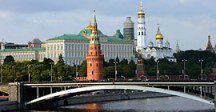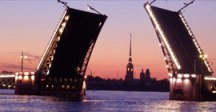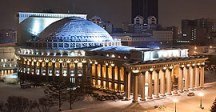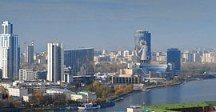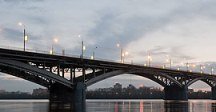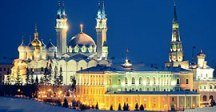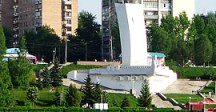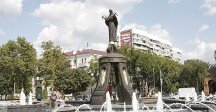Map of Yaroslavl
Detailed interactive map of Yaroslavl. Map of Yaroslavl with streets and numbers of houses. Satellite map of Yaroslavl with sights of the city.
The change between the satellite map of Yaroslavl and the schematic one is made in the lower left corner of the interactive map.
Yaroslavl
Population of Yaroslavl: 601,403 people (2021)
Date of foundation of Yaroslavl: 1010
Phone code of the city Yaroslavl: +7 4852
Automobile code of the city Yaroslavl: 76
Postal code of the city Yaroslavl: 150000-150066
Yaroslavl is one of the very first Russian cities, which was well known in Ancient Russia. Its value has a global character, because this is one of the main stops on the Golden Ring tourist route. In 2010, he celebrated his anniversary, Yaroslavl turned 1000 years old.
The rapid growth of the city did not prevent it from preserving its historical heritage. There are almost 800 monuments on the territory of the city. The most grandiose is the Spaso–Preobrazhensky monastery complex, which a few centuries ago performed not spiritual functions, but defensive ones.
It is included in the list of the largest monasteries in the world. Yaroslavl is also known in Russia as the theatrical capital of the state, because the very first Russian theater opened its doors there. To this day, the building adorns the city, proudly bearing the title of the most beautiful building.
What to see in Yaroslavl
The Epiphany Church is a famous example of Yaroslavl architecture of the 17th century. It was built between 1684 and 1693 by order of the local merchant Alexei Zubchaninov. It was the first church in the city built without internal columns.
Monument to Prince Yaroslav the Wise. In the very center of Bogoyavlenskaya Square there is a statue of Prince Yaroslav the Wise, the founder of the city in the 11th century. Yaroslav was the Prince of Rostov when he founded Yaroslavl, but became the Grand Duke of Kiev after he defeated his older brother Svyatopolk the Damned. The monument was unveiled in 1993 in the presence of President Boris Yeltsin.
The Spaso-Preobrazhensky Monastery (Yaroslavl Museum-Reserve) on Bogoyavlenskaya Square. It is not known exactly when the Transfiguration Monastery was founded, but it is believed that it dates back to the beginning of the 13th century, and was founded by Prince Konstantin Yaroslavsky. It was built on the northern bank of the Kotorosl River and served both a defensive and religious function.
The Music and Time Museum is one of the first private museums in post-Soviet Russia, opened in 1993 by local collector, actor and magician John Mostoslavsky. The museum's exposition features musical instruments, gramophones, records, icons, samovars, clocks, irons and bells.
The Church of the Archangel Michael on Pervomaiskaya Street. The current version of the Archangel Michael Church was built between 1657 and 1682. The current church has a standard shape: one building topped with five green domes.
The church ensemble of the Annunciation Church and the Ascension Church. In the upper part of the Volga embankment, just behind the River Port, there is a church ensemble consisting of two churches: the Annunciation Church, which is used in the summer months and the Church of the Ascension, which is used in the winter months. The oldest of the two is the Church of the Annunciation, which dates from 1688 to 1702. It is a simplified form of the Yaroslavl style of church architecture, topped with five unusually elongated domes.
The embankments along Kotorosl and Volga are known as Kotoroslnaya Embankment and Volzhskaya Embankment, respectively, they meet at the confluence of the rivers at the beginning of Mira Boulevard. It's nice to just walk through them, although several museums and churches are also located here.
The Yaroslavl History Museum was opened in 1999 in the Baroque mansion of the Vakhrameev family. Most of the interior of the merchant's mansion has been preserved. The museum's exhibitions tell about the history of the ancient city and showcase finds from archaeological excavations, icons of Yaroslavl princes, coins, ancient weapons and many paintings and photographs of famous citizens of Yaroslavl.
Sculpture of the Holy Trinity on Mira Boulevard between Kotoroslnaya and Volzhskaya embankments. In 1995, a sculpture dedicated to the Holy Trinity was unveiled in the park where the altar of the Assumption Cathedral once stood. After the reconstruction of the Assumption Cathedral, the monument is now located next to the new cathedral.
Yaroslavl Millennium Park. On the eve of the celebration of the millennium of Yaroslavl in 2010, a monument to the Millennium of Yaroslavl was erected at the end of the Arrow formed where the Kotorosl flows into the Volga. Musical fountains have been installed in the park, which are especially beautiful in the evening when illuminated.
The Church of the Nativity of Christ was the second church built outside the Kremlin and the Transfiguration Monastery, starting in 1644. Originally there was a wooden church here, which in 1609 received a revered copy of the icon of the Kazan Mother of God during the Time of Troubles. The stone church was built at the expense of the Guriev-Nazariev family, who were local merchants.
Monument to Nikolai Nekrasov at the intersection of Pervomaiskaya Street and Volzhskaya embankment. Nikolai Nekrasov (1821-1877) was a Russian poet who was born in Nemirov in Ukraine, but grew up on his father's estate in Greshnevo near Yaroslavl, and later studied in Yaroslavl and bought the Karanik estate near Yaroslavl, where he spent many summer months. This monument includes his statue and a large bas-relief depicting characters from his works.
The Chapel of the Kazan Icon of the Mother of God on the Kotoroslnaya embankment, opposite the Holy Gates of the Transfiguration Monastery. It is both a simple chapel and a rather elegant monument to the People's Army of Minin and Pozharsky, who liberated Moscow from the Poles in 1612. It was opened in 1997 and is a tall pyramid with a stained glass window depicting the icon of the Kazan Mother of God.
The Volzhskaya Tower is one of two towers that represent all that remains of the 17th-century fortress walls of Yaroslavl, which once surrounded the entire historical center. The tower was built between 1658 and 1669 near the banks of the Volga River, after which it is named. It is also known as the Arsenal Tower, as the tower has been used as an arsenal since the middle of the 19th century.
The War Memorial and the Eternal Flame on Mira Boulevard between Pochtovaya Street and Volzhsky Descent. The Yaroslavl World War II Memorial was opened in 1968 and consists of two large stone pedestals: one with an engraving of a soldier and one with an engraving of a woman depicting heroes of the front and heroes of labor, respectively. There is an eternal flame between them.
The Yaroslavl Art Museum on the Volga Embankment was founded in 1919, and its main exhibitions are located in the house of the early 19th century, which once served as the residence of the governor. The museum has one of the largest art collections in Russia.
The Alexander Nevsky Chapel on Andropov Street was built in 1892 in honor of the miraculous rescue of the tsar and his family when the imperial train crashed near Borka in 1888.
Kirov pedestrian Street runs from Sovetskaya Square, where the Church of St. Elijah the Prophet stands, to the Vlasyevskaya Tower. This street, along with Deputatsky Lane, is a pedestrian zone and the main tourist street of Yaroslavl, with shops, restaurants and souvenir kiosks. Since 1937, it has been named after the Soviet revolutionary Sergei Kirov, but before that it was known as Uglichskaya Street.
The Vlasyevskaya Tower is one of two towers that remains of the 16th century fortress wall that once surrounded the historical center. It was built of stone between 1658 and 1659 and served as one of the five entrances to the fortress.
The Yaroslavl Museum of Military Glory on Uglichskaya Street was opened in 1981 on the 40th anniversary of the formation of the Yaroslavl 234th Infantry Division and is a branch of the Yaroslavl Museum-Reserve.
Sights of Yaroslavl
Monument to Yaroslav the Wise, Yaroslavl Zoo, Tolga Monastery, Assumption Cathedral, Yaroslavl Museum-Reserve, Church of Elijah the Prophet, Spaso-Preobrazhensky Monastery, Russian Drama Theater named after F.Volkova, Demidovsky Garden, Church of the Epiphany, Kazan Monastery, Volga Tower, Church of St. Michael the Archangel, Alexander Nevsky Chapel, Monument to the 1000th anniversary of Yaroslavl, Chapel of Our Lady of Kazan, Eternal Flame, Governor's House, Memorial House-Museum M. Bogdanovich, Yaroslavl Puppet Theater, Krestobogorodskaya Church, Demidovsky Pillar, Gostiny Dvor, Monument to Nikolai Nekrasov, Museum of the History of the city of Yaroslavl, Sretenskaya Church, Yaroslavl Theater for Young Spectators, Yaroslavl Embankment, St. Vvedensky Tolga Convent, Monument to Athos and plasterer Kolya, Fountains on Strelka, Monument to the Bear, Dolphinarium in Yaroslavl.
The largest cities in Russia:
2024 © Russia-Karta.ru
